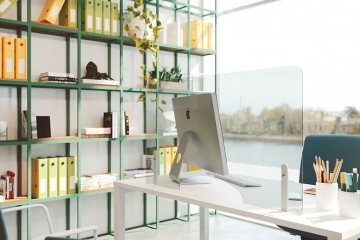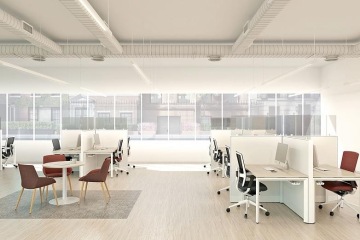Work in the post COVID-19 era

How can we adapt work and social environments to new sanitary and hygienic conditions, strike a balance between remote working and the traditional office setting, and guarantee health and safety in co-working and leisure spaces? These are just some of the issues that we are most concerned with when we talk about "getting back to the new normal".

First step
The transformation we've been experiencing in the day-to-day lives of companies, workers, and individuals has revealed a process of social change that has only just begun. Remote working, driven by the current health crisis, is the first step of a profound reshaping of work models and, consequently, the spaces that house them.

A distance
A minimum distance of 2 metres between workers, reduced capacity, ecological awareness, digital transformation, ergonomic furniture, self-supporting protective panels, antibacterial materials, and flexible and versatile spaces are just some of the key concepts for these reinvented workplaces.